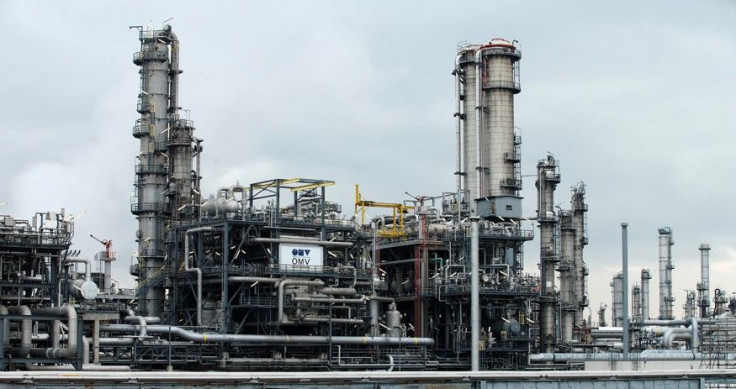Global Markets Overview - Feb. 16, 2016

Back to ‘bankics’
What a difference a rally makes – reading the headlines this morning would make you think the world was fixed.
The fact is the US was a way for Presidents’ Day to lead from the western side of the Atlantic and a dose of rationality suggest the macro overreach is still a very real problem. However, the fear and pessimism factors versus slowing macro themes are two very different things, which explain the overreach.
Fear factors:
· China – Trade balance was weak, and the export figures illustrate demand isn’t there on a global basis. However, the Zhou effect cannot be ignored and the CNY fix coupled with his comments should settle the fear factor around an August 2015-styled devaluation and capital outflows.
· Oil – The economic impact of oil on the likes of the US and Europe is an interesting one. It is a large creator of employment and GDP – particularly for the US. It’s a sign of risk-on activity as manufacturing firms increase consumption during those times However, low oil is double-edged, consumer spending is positively impacted, as are firm costs. Think back to 2013 when the headlines were ‘high oil prices will push nations into recession’, now it’s ‘low oil price will push nations into recession’. Fear over rationality?
· Negative rates – The decisions by the Bank of Japan and European Central Bank to make the deposit rate negative following the likes of the Swiss National Bank, Riksbank and Nationalbaken into negative rates has been met with an interesting response. Markets have interpreted negative rates as a possible funding crisis issue for private banks as it retards normalised operations around depositing funds with the central banks. Fear over rationality?
Back to bankics:
· European banks have been the epicentre of the fears around negative rates. The interesting point here is that European banks can more than handle coupon payments, funding is highly liquid, money markets haven’t shown any signs of distress, and the 2012 TLTRO’s emergency liquidity funds are still in the main unused.
· Looking more broadly, banks are consistently delivering on ‘quality’. Asset values are yet to see the forecasted upswing in bad and doubtful debts. Loan books remain very solid and more importantly, deposits are increasing which lowers reliance on wholesale funding.
· Banks are ‘safer’ than ever; the Basel III requirements now see some of the highest levels of capital on balance sheets in the modern bank world.
· Australian banks are even more interesting; although pay-out ratios are moderating, funding, asset quality and exposure to residential and services loans are overpowering the risks in energy and material loans.
· Banks are normally priced on a price-to-earnings and a price-to-book basis. There are several European banks trading on a 0.6 times price-to-book ratio. This is cheap historically and rationally. US banks are trading at discounts-to-book of around 0.85 times book. Jamie Dimon’s 500,000 share pick of JP Morgan looks to be a value-based opportunity.
Banks globally have lost between 13% and 30% on systemic fears. The underperformance in banks is also something global indices are not used to in this environment. The fear and pessimism baked into markets particularly in this space looks, on paper anyway, as a value option not seen since 2011.
(No BHP or CBA ADR’s as US markets were shut)
Asian markets opening call
Price at 8:00am AEDT
Change from the Offical market close
Percentage Change
Australia 200 cash (ASX 200)
4,852.70
9
0.19%
Japan 225 (Nikkei)
15,909.00
-114
-0.71%
Hong Kong HS 50 cash (Hang Seng)
18,968.60
50
0.27%
China H-shares cash
7,952.60
89
1.13%
Singapore Blue Chip cash (MSCI Singapore)
295.02
1
0.38%
Futures Markets
Price at 8:00am AEDT
Change Since Australian Market Close
Percentage Change
Dow Jones Futures (March)
16,122.50
457.50
2.92%
S&P Futures (March)
1,884.50
51.88
2.83%
ASX SPI Futures (March)
4,811.00
94.50
1.83%
NKY 225 Futures (March)
15,937.50
725.00
4.77%
Key inputs for the upcoming Australian trading session (Change are from 16:00 AEDT )
Price at 8:00am AEDT
Change Since Australian Market Close
Percentage Change
AUD/USD
$0.7137
0.0031
0.44%
USD/JPY
¥114.575
1.870
1.66%
Rio Tinto Plc (London)
£18.55
1.50
8.80%
BHP Billiton Plc (London)
£7.00
0.66
10.39%
Metals Exchanges
Price at 8:00am AEDT
Change Since Australian Market Close
Percentage Change
Gold (spot)
$1,209.95
-23.50
-1.91%
Brent Crude (April)
$34.01
2.29
7.20%
Aluminium (London)
1506
22.00
1.48%
Copper (London)
4565
122.00
2.75%
Nickel (London)
8270
690.00
9.10%
Zinc (London)
1682
-27.00
-1.58%
Iron Ore (62%Fe Qingdao)
$46.26
2.61
5.98%
IG Iron Ore (CNH)
¥332.65
2.30
0.70%
IG provides round-the-clock CFD trading on currencies, indices and commodities. The levels quoted in this email are the latest tradeable price for each market. The net change for each market is referenced from the corresponding tradeable level at yesterday’s close of the ASX. These levels are specifically tailored for the Australian trader and take into account the 24hr nature of global markets.
Please contact IG if you require market commentary or the latest dealing price.
EVAN LUCAS
Market Strategist
IG, Level 15, 55 Collins Street, Melbourne VIC 3000
D: +61398601748 | T: +61398601711
www.ig.com
IG Markets
[Kick off your trading day with our newsletter]
More from IBT Markets:
Follow us on Facebook
Follow us on Twitter
Subscribe to get this delivered to your inbox daily






